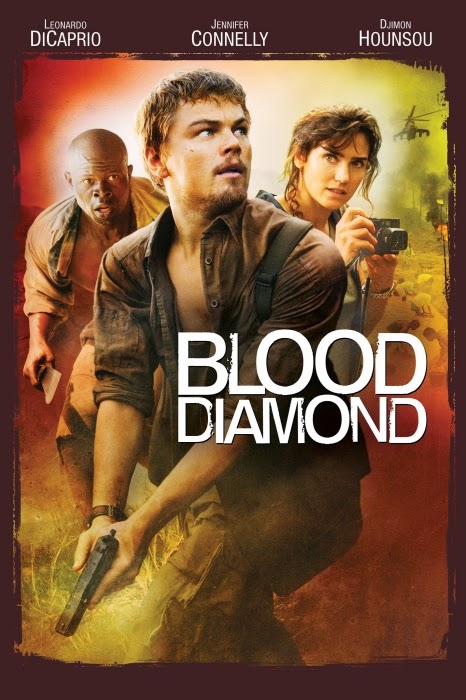For Your Information: Blood Diamonds (DISEC Topic A)
In the lead up to the YMUN Korea 2014 committee sessions, the YMUNK Press Corps has prepared a series of articles, called For Your Information, about the topics discussed during the conference. Here's DISEC's Topic A: Blood Diamonds.
In 2006, the American-German
movie Blood Diamond starring Leonardo DiCaprio provided significant popular coverage
on the named conflict. An ending scene in the movie depicted a historic meeting
that took place in Kimberley, South Africa in 2000. This meeting eventually led
to development and establishment of the Kimberley Process Certification Scheme
(KCPS) in 2003.
The blood diamond conflict is a term used to highlight the
negative consequences of the diamond trade. Blood Diamonds are usually mined in
African war zones and other areas that are in the midst of civil wars. These
diamonds are sold on the international diamond market and finance conflicts by
intensifying civil wars through the funding of militaries and rebel militias.
For example, in 2000, the United Nations accused Liberian president Charles G.
Taylor of supporting the Revolutionary United Front (RUF) insurgency in
neighboring Sierra Leone with weapons and training in exchange for diamonds.
The strong draw of potentially huge profits from the diamond trade cause these
groups to fight with each other to control diamond-rich territories and results
in bloodshed and shocking human rights abuses.
The KCPS seeks to indirectly address the problems of the Blood
diamond trade by establishing a process to certify the origin of rough
diamonds, thus encouraging the buyers of diamonds on the international market
to purchase only Kimberley certified diamonds and to prevent conflict diamonds
from entering the mainstream diamond market. However, in 2011, certain key
proponent organizations such as Global
Witness brought the
effectiveness of the process into question. Global
Witness claimed that the KCPS
has failed in its purpose, as it did not provide markets with the requisite
assurance of conflict-free diamonds. Global
Witness pulled out of the
scheme on 5 December 2011.
The KCPS has struggled to maintain its legitimacy for multiple
reasons. First, it is difficult to monitor the certification process when the
power of certification is handed over to corrupt government officials in
leading diamond producing countries. In these countries, it is common for
officials to be bribed on a daily basis in exchange for paperwork declaring
that the Kimberley Process has certified Blood Diamonds.
Second, there are major loopholes involved in the certification
process. The current process entails that certification is transported in a
tamper-resistant container and is accompanied by a government-validated
Kimberley Process Certificate. The lack of the individual marking of diamonds
leads to many potential problems such as the acquiring of a properly certified
container and then filling up this container with blood diamonds without
breaking the seal. This has led to the legitimacy issues, which were rightly
raised by Global Witness.
While major initiatives such as the Kimberley process are admirable, there is still much left to be desired in terms of the tightening these processes in order to solve the Blood Diamond conflict. The war on Blood diamonds has to take place on multiple fronts. Governments, the diamond industry, and non-governmental organizations must also take an active role in addressing the challenges facing the diamond-mining industry in order to ensure that it contributes to sustainable development. We look forward to hearing more about the Blood Diamond conflict in the DISEC council sessions over the next few days at YMUN.
While major initiatives such as the Kimberley process are admirable, there is still much left to be desired in terms of the tightening these processes in order to solve the Blood Diamond conflict. The war on Blood diamonds has to take place on multiple fronts. Governments, the diamond industry, and non-governmental organizations must also take an active role in addressing the challenges facing the diamond-mining industry in order to ensure that it contributes to sustainable development. We look forward to hearing more about the Blood Diamond conflict in the DISEC council sessions over the next few days at YMUN.
By Linus Seah
Photo courtesy of http://www.movie-poster-artwork-finder.com/blood-diamond-poster-artwork-leonardo-dicaprio-jennifer-connelly-djimon-hounsou/







